#Saturnalia tree
Text
Saturnalia tree

WassailingĮven Christmas charity was far from innocent. Not surprisingly, such seasonal merrymaking resulted in higher than usual birth rates in the months of September and October, as well as real rather than burlesque marriages. Young men and women often took advantage of the moral laxity of the Christmas season to engage in late-night drinking and sex. “December was called the Voluptuous Month” for a reason, wrote Reverend Increase Mather in 1687. Twelfth-night (The King Drinks), painted by David Teniers the Younger, between 16. One account from Lincolnshire in 1637 relates how the revellers decided the Lord must have a “Christmas wife,” and brought him “one Elizabeth Pitto, daughter of the hog-herd of the town.” Another man dressed as a vicar then married the lord and lady, reading the entire service from the Book of Common Prayer, after which “the affair was carried to its utmost extent.” Had they not carried the matter so far, the account continues, “probably there would be no harm.” As it was, “the parties had time to repent at leisure in prison.” Revellers under the auspices of the “Lord” marched the streets dressed in costume, drinking ale, singing carols, playing instruments, fornicating and causing damage to property. In early modern England, it was common practice to elect a “Lord of Misrule” to oversee Christmas celebrations. The 16th century bishop Hugh Latimer lamented that many Christians “dishonoured Christ more in the 12 days of Christmas than in all the 12 months besides.” Lords and Ladies of Misrule Add to this the holly, the mistletoe and (much later) the tree, and we have a Christmas inclusive of a variety of pagan traditions.īut as time went on, Church leaders became increasingly disillusioned by the way the carnival that was Saturnalia simply carried on under a thin veneer of Christian piety. Gift-giving, feasting, candles, gambling, promiscuity and misrule were the hallmarks of Saturnalia. Gambling, as seen here in a fresco from Pompeii, was a hallmark of the Roman celebration of Saturnalia. As historian Stephen Nissenbaum pointed out in his acclaimed The Battle for Christmas, the early Church entered into a compromise: in exchange for widespread celebration of the birth of Christ, it permitted the traditions of Saturnalia to continue in the name of the saviour. But what the Romans really celebrated during the month of December was Saturnalia, an end of harvest festival that concluded with the winter solstice. There is some evidence the Romans worshipped Sol Invictus, their sun god, on December 25. And it did so knowing well that there were no biblical or historical reasons to place Christ’s birth on that day. It was not until the 4th century that the Church of Rome recognised December 25 as the date to celebrate the birth of the messiah. Christmas was a carnival of drink, cross-dressing, violence and lust during which Christians were unshackled from the ethical norms expected of them the rest of the year.

0 notes
Text
Saturnalia tree

The royal Christmas tree was decorated with candles the first account of using lighted candles as decorations on a Christmas tree. In the English-speaking world, the popularity of Christmas trees is widely attributed to Clement Clarke Moore‘s 1822 poem (first published in Troy), ‘Twas The Night Before Christmas’, which also helped popularize our modern-day Santa Claus, and to Queen Victoria or, more accurately, her husband Prince Albert, a native of Saxony (now part of Germany), who famously set up an elaborate Christbaum at Windsor Castle in 1841. Over time, the Paradise Tree would be renamed the Christbaum, or Christ Tree, its branches decorated with pastry and marzipan in the shape of hearts, stars, bells, animals, and angels. (It’s worth noting that early church calendars of saints designated December 24th as Adam and Eve’s day.) The play’s central prop was the Paradise Tree a large evergreen, its branches laden with apples and nuts. Among the most popular was the Paradise Play, which depicted the story of Adam and Eve and ended with the promise of a coming savior. He is said to have rebuked the actions of the assembled crowd and cut down their hallowed oak, saying to them, “Here the cross of Christ shall break the hammer of the false god Thor.” Then he instructed them to gather around a small, attractive fir tree growing within the roots of the fallen oak identifying it as a “sign of an endless life, for its leaves are evergreen,” and calling it “the tree of the Christ child.”įrom the 9th through the 16th centuries, plays, known as mystery or miracle plays were used to teach biblical stories. Boniface of Crediton (680–754), a missionary to the Germanic people who, in 725, challenged a group of pagans preparing a sacrifice at the base of Thor’s oak an old and sacred tree growing in the town of Geismar, in central Germany. In Northern Europe, the Celts and Scandinavians brought evergreen trees into their homes and hung bells and food items from the branches, so the spirits of the trees would be warm and comfortable and, in return, bless the home’s inhabitants.Ĭhristmas trees, as we know them today, may have their origin in the work of a Catholic monk St. Saturnalia was also a time for decorating trees, exchanging presents and going door to door singing (caroling) in exchange for food, drink, and gifts. The Christmas tree tradition can be traced back to the Roman celebration of the winter solstice the festival of Saturnalia, the pagan feast of Saturn, god of the harvest when evergreens were used to decorate homes and temples. Real trees have a stately presence and rich, fragrant aroma that awakens the senses, bringing the forest into the home and warmly welcoming everyone that enters. As far as I’m concerned, Christmas just isn’t Christmas without a beautifully decorated, real Christmas tree.

1 note
·
View note
Text
In situ: The Gutter Twins, "Saturnalia"
Record: Saturnalia (Sub Pop Records, 2008)
In a more visionary world than we will ever experience, Mark Lanegan’s I Am the Wolf: Lyrics & Writings (Da Capo Press, 2017), with its insider notes from the magic mountain where some of his songs came from, would have by now been greatly expanded to incorporate a more complete record of this colossus recording artist’s output as writer, songwriter,…

View On WordPress
#BMG#Da Capo Press#Ellensburg#Greg Dulli#Hachette Books#Indie Music#Josh Homme#Mark Lanegan#Pitchfork#Queens of the Stone Age#Saturnalia#Seattle Music Scene#Sub Pop Records#The Afghan Whigs#The Business#The Gutter Twins#The Screaming Trees#The Twilight Singers#Tinariwen#UNKLE#White Rabbit Press
2 notes
·
View notes
Text
The Unknown Origins of Christmas & Christianity
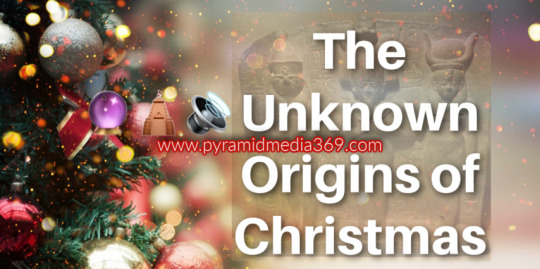
Original post: The Unknown Origins of Christmas & Christianity (pyramidmedia369.com)
There is a wide variety of artifacts below that detail the origins of the Christmas ritual. The information below will be quite alarming, because it can cause deep confusion depending on where you stand in your spiritual journey. There's a lot to uncover here. I'm only here to make you think. Lets get to it.
We will address the following:
Christ-Mass
Saturnalia
Saturn Worship
ACTS 14:12 + GENESIS 11:5-9 in the Bible
Who is Nimrod?
How does Nimrod tie to the story of Christ?
The original Virgin Mary story
The Winter Solstice
Christ-Mass & the start of Christianity
The word "Christmas" is a derivative of "Christ-Mass". With Mass being a common practice in Roman Catholicism, having a nature specific to certain dates for more than just astrological reasons. The roots of Christmas were first planted in ancient Rome with Saturnalia: the original ritual of Christmas. In 336 AD, Pope Julius I decided to call December 25th "Christ-Mass", in an effort to adopt and absorb the traditions of the pagan Saturnalia festival. This is just 11 years after the beginning of Christianity, which started in 325 AD by Constantine The Great at the Council of Nicea. At the CON, Constantine stated that religious peace could only occur if a single religion is imposed throughout the empire, therefore no one could leave the empire until they agreed on a Universal interpretation for Christianity. There were only 5 priests who disagreed with him. Therefore, the bible doctrine we read today was subjugated by votes. Meaning, the stories/scriptures they would or would not include in the bible had to be voted for by the Council of Nicea. Which is why 75 books were removed from the bible as Christianity was created.
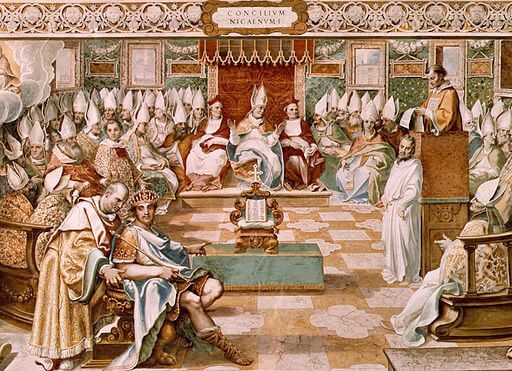
I wonder, why didn't Christianity evolve as its own semitic denomination? Yeshua (Jesus) was a Jew from the tribe of Judah by lineage, and the New Testament states his crucifixion was ordered by the Roman Catholic church. Why is Christianity a denomination of Catholicism, and not Hebrew customs? Weird.
Saturnalia
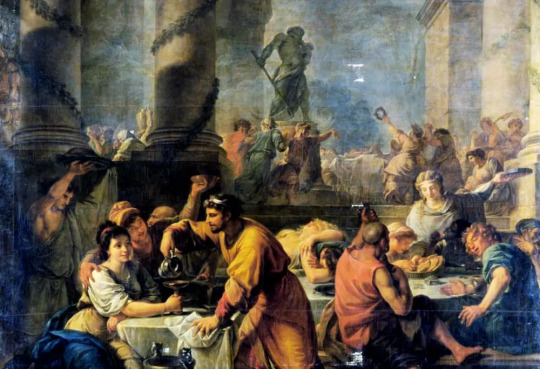
Saturnalia was originally a celebration of the god 'Saturn', which would last from December 17th through December 25th. I do recommend that you research the nature of these festivals on your own. Before it was Jesus Christ's birthday, it was Nimrod's birthday and was widely celebrated similar to the way we celebrate Christmas. To the Romans, Nimrod was called Saturn; the Greeks called him Kronos; the Egyptians called him Osiris; the Phoenicians and Canaanites called him Baal. Interesting, isn't it?
Saturn Worship

It's not just ancient Romania; Saturn does play an important role in our spiritual evolution for many different reasons. For starters, Saturn is associated as the Lord of Karma and Time. Honoring Saturn is not merely just a pagan practice, hence why the Hebrew Sabbath day is on Saturday, the day of Saturn. If you look up any Pre-Copernicus astrological facts, you will find that Saturn is revered as the highest heaven of all the planetary bodies. Yes, each planet is considered not just a god/goddess, but also a heaven and dimension. The energetic nature of these planets are described through the personification of said deities.
You can learn more about how the roles the planets played in the ancient pantheons of spirituality and astrology here: "How The Days Got Their Names?"
Saturnalia is an ancient Greco-Roman festival, which also explains why the Bible stories include characters/gods from Greek-Roman pantheon. For example..
'Acts 14:12' in the Bible
King James Version:
"And they called Barnabas, Jupiter; and Paul, Mercurius, because he was the chief speaker."
New International Version:
"Barabas, they called Zeus, and Paul they called Hermes because he was the chief speaker."
Mercury is the planet of communication, while Jupiter is the planet of rulership. Barnabus and Paul were appointed these names because of the social role they were playing among their tribe and society. This means that at a point in time, astrology was highly implemented by the progenitors of these said religions.
Who is Nimrod?

Nimrod is a son of Cush, grandson of Ham and great grandson of Noah. "He was a mighty hunter before (against) the Lord" - Genisis 10:9. He was rebellious to the God of the bible, YHWH/ENLIL. Nimrod was the architect and main builder of the Tower of Babel. In Sumerian language, this tower is called Etemenanki, "the stairway between heaven and earth". The purpose of this tower was initially built in dedication to Enlil's brother, ENKI, to go high enough to see the gods. It was built in a spot the Babylonians believed was the very center of our Universe. Rome, which is just Babylon in a different time, was the original city of Saturn.
During the construction of the Tower of Babylon, the peoples of the earth remained undivided, with one language and culture. But this was against God's orders. Read Genesis 11:5-9, where it describes how God made the builders scatter and divided their languages and kept them from being able to understand one another. This led to the final destruction of the tower.
How does Nimrod tie to the story of Christ?
After Nimrod's death (c. 2167 BC), his wife Semiramis promoted the belief that he was a god. She claimed that she saw a full-grown evergreen tree spring out of the roots of a dead tree stump, symbolizing the springing forth of new life for Nimrod. On the anniversary of his birth, she said, Nimrod would visit the evergreen tree and leave gifts under it. His birthday fell on the winter solstice at the end of December. This is how the Christmas Tree tradition originated.
Traditionally, a yule log was burned in the fireplace on Christmas Eve and during the night as the log’s embers died, there appeared in the room, as if by magic, a Christmas tree surrounded by gifts. The yule log represented the sun-god Nimrod and the Christmas tree represented himself resurrected as his own son, Tammuz who is Horus/Heru. Remember, the names are different because of the languages used throughout different kingdoms.
This story can also be found in the Sumerian story, The Epic of Gilgamesh, who is also Nimrod, who is Horus, who is Heru, who is Hercules. This is where the word "HERO" comes from! Let's get back on topic now...
The original Virgin Mary story
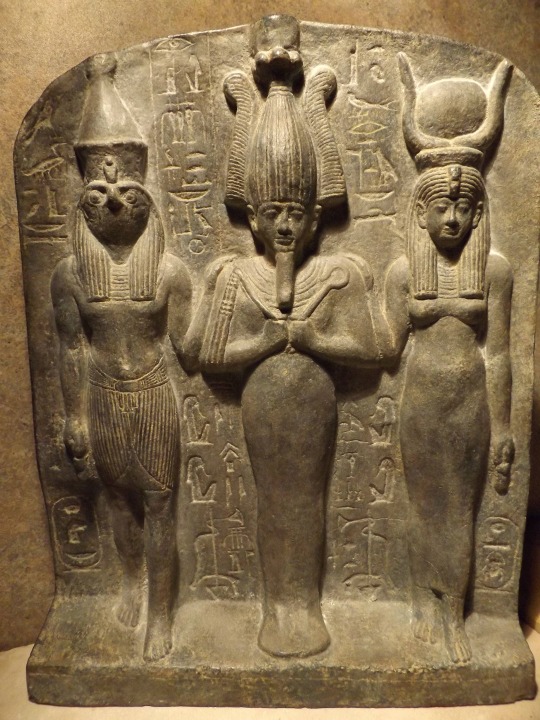
Osiris's story is almost exactly the same, just a few details make it more of a different story in other cultures. Nimrod's story is only missing the details of how his wife Semiramis, who is Isis, was able to conceive this miracle child. This is how the concept of the Holy Trinity began.
Nimrod-Semiramis-Tammuz version:
"Nimrod's uncle Shem killed Nimrod and scattered his remains across the land. When his wife became pregnant five month's later, she proclaimed that she was made pregnant by the rays of the Sun, which was supposedly her husband Nimrod."
Osiris-Isis-Horus version:
"But one night Set, hunting by the light of the moon, found the chest, and, recognizing the body, tore it into fourteen pieces, which he scattered up and down throughout the land. When Isis heard of this, she took a boat and gathered the fragments of Osiris's body. Wherever she found one, there she built a tomb and pieced Osiris back together, who was then brought back to life. At this moment, Isis conceived Horus who later avenged Osiris's death."
The Winter Solstice
Ironically, the Sun cycle dies for 3 days. Its cycle is renewed, and the Sun begins to rise again on the 3rd day. Sound familiar? Throughout these 3 days, the Sun is at its lowest point out of a complete 365-day year. On December 25th, the Sun moves one degree northward and is symbolically born again!
"The New Testament stories are based on the initiation ceremonies and esoteric secrets including astrology and Sun worship that were performed and communicated in the Mystery schools of Sumer, Babylon, and Egypt. In modern times, they are performed in Freemasonry, Order of the Eastern Star, Rosicrucianism, Order of the Golden Dawn, Thule Society, etc. But they are presented as a literal story to fool the people; especially Christianity, Judaism and Islam." - David Icke
Conclusion:
So Nimrod's story is Osiris's story. Considering that Horus is an incarnation of Osiris, the Horus legend also belongs to Nimrod as well. I can see how the confusion begins for many of us. Because Nimrod was killed by his own uncle - and Horus sought revenge on his uncle Seth who killed his father, Osiris. I know you're like, "How did he kill the person that killed him?" LOL there's so many empty blanks to fill in!
The ancient story says Isis used the pyramid of Giza to draw Osiris's spirit down into his body once she put him back together, after being killed and dismembered by his brother Set. It is also said that the Egyptians used Orion's belt as a gateway aka portal to travel to Earth's dimension with the use of the Pyramid. These are the missing details in the other stories. I shall return!
Thank you for reading!
If you do not truly understand how the planets, ancient Gods, and humanity are all connected, please feel free to reach out to me and ask any questions you may have at [email protected]. I try to leave clues in my previous articles, but I understand information has to be organized based upon your questions and needs. - Phoenix Son
#esoteric#shadow work#pyramid media#peace#higher self#mantra#nature#inner peace#meditate#spiritualism#Christmas#holidays#xmas#festive#christmas tree#happy holidays#saturnalia#traditions#yule#yuletide#pagan holidays#happy yule#Nimrod#Enki#Enlil#Sumeria#mesopotamia#Ancient Egypt#Egypt#Osiris
5 notes
·
View notes
Text


"Gather 'round Children. Let me tell you a Christmas tale ..."
2 notes
·
View notes
Text
Watch "How Christmas trees stopped being just a German thing" on YouTube
youtube
#christmas#trees#world history#us history#ancient rome#saturnalia#christianity#pagan#germany#Youtube
2 notes
·
View notes
Text
0 notes
Text
#deco my tree#happy solstice#happy holidays#yule#yule tree#celtic festival#celtic mythology#saturnalia#ancient rome festival
0 notes
Link
Hey yule-all, it’s another f’n Xmas Playlist! Play on “Shuffle” and enjoy
And Happy Holidays!
#playlist#xmas playlist#xmas#christmas#christmas playlist#xmas music#christmas music#sad santa#Spotify#spotify playlist#spotify xmas playlist#spotify christmas music#joyeux noël#merry christmas#happy christmas#yule#yule log#saturnalia#xmas tree#christmas tree#dogs#music#december#pagans#pagan#happy holidays
0 notes
Text
Annual reminder that:
Christmas trees were not "stolen" from pagans.
Christians didn't "steal" Sol Invictus.
They didn't "steal" Saturnalia, either.
Santa Claus was not based on Odin.
The trouble with claims that various elements of Christmas were "stolen" from pagans is that it vastly oversimplifies and overlooks huge amounts of history.
Furthermore, the whole thing is tied in with conspiracism, both from Christians and pagans. Christian conspiracy theorists cite it as evidence that Satan is lurking everywhere; pagan conspiracy theorists tend to incorporate it into the TERF-y belief that Christianity was part of a conspiracy to suppress the Divine Feminine.
So yeah, always be a bit cautious anytime you hear somebody claiming something was "stolen" from pagans - try and find out what modern scholars have to say on the matter.
#christmas#pagan#paganism#history#pseudohistory#conspiracism#conspiracy theories#conspiracy theory#yule#solstice#witchblr
683 notes
·
View notes
Photo
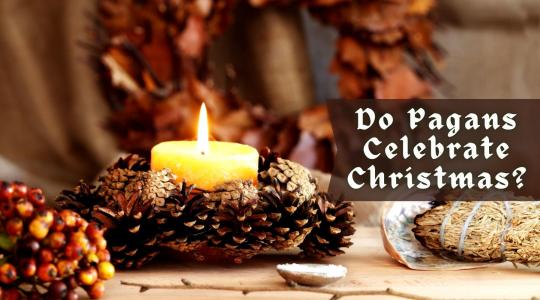
Do Pagans Celebrate Christmas?
Christmas is a Christian festival (the hint is in the name), so it is not a festival that you would expect to see celebrated by Pagan communities, old or new.
But Christmas is a Christian adaptation of the Winter Solstice, which, in the northern hemisphere, is the shortest day of the year and usually falls around 21 December. For communities that observe the wheel of the year and the changing of the seasons, this is an incredibly important day.
It was around this time that ancient Pagans no longer had food to feed their cattle, so they would slaughter them and have fresh meat for the solstice. This was also the time when the beer and wine brewed earlier in the year were finally fermented, so there were lots of good things to drink. If that is not a good enough reason for a holiday, the moment when the days start lengthening was also considered by many Pagan communities to represent the sun’s rebirth.
So, if you look at the festival calendars of the Pagan communities of the northern hemisphere, most of them have a major festival around the time of the Winter Solstice. The existence of these festivals is also why Christmas falls on December 25th.
The Invention of Christmas
Christmas was invented by the Roman Catholic Church in the 4th century. Before this, Easter was the main Christian holiday.
The Bible does not mention when Jesus of Nazareth was born, but it does seem unlikely that it was in December. Temperatures drop as low as 40 degrees Fahrenheit (5 degrees Celsius) in winter in the area surrounding Jerusalem and Galilee. Shepherds were unlikely to be tending their flocks, and the Romans probably would have conducted their census in warmer months.
But the Church decided to celebrate the birth of Jesus in December to coincide with the major Roman festival of the Saturnalia. This is a week-long festival that occurred between 17 and 24 December to celebrate the fertility god Saturn. For all the reasons already mentioned, it was a major festival period in the Roman world.
The 25th of December was chosen as the actual birthday of Jesus, rather than another day during the Saturnalia, such as the day of the solstice, because this was the festival day of the god Sol Invictus. His temple was inaugurated in Rome on 25 December 274 by the emperor Aurelianus. It was probably not inaugurated on the solstice because this was already a feast day for Dionysus, Hercules, Adonis, and Mithras.
Sol Invictus was the most important god in the Roman Empire before its conversion to Christianity, so it made sense for the Church to conflate Christ with this deity.
The Christmas festival absorbed many of the customs of the Saturnalia and was exported around the rest of Europe with Christianity.
As Christmas spread, it also adopted other Pagan traditions associated with the Winter Solstice. For example, when King Haakon I of Norway converted his country to Christianity in the 10th century, he changed the date of the traditional Norse Yule celebration to coincide with Christmas. Many Norse Yule traditions were incorporated into Christmas. Similar things happened wherever the Church took its new holidays.
Christmas Traditions with Pagan Roots
So, which of the many Christmas traditions that we practice today have Pagan roots? Let’s take a look at just a few examples.
Gift Exchange
It was traditional to exchange gifts as part of the Saturnalia, but it was very different from modern gift-giving. It was traditional for Romans to give one gift to another person (kind of like a Secret Santa), and the gift was almost always a statuette of a god that could be placed in the household shrine.
This may also have been the origin of the nativity scene. The Romans renovated their household shrines with new divine images, and today families create nativity scenes each year.
Christmas Trees
The Romans would decorate their homes with evergreen trees during Saturnalia as part of rituals to ensure the prosperity of farms and orchards in the following year. This was very likely the origin of the Christmas tree.
Deck the Halls
In the Norse world, the Vikings would gather in their temples and long halls for the Winter Solstice. They believed that at this dark time of year, the veil between the worlds was at its thinnest, and dark spirits could cross over. Staying inside and together was a form of protection.
The Vikings would bring animals to sacrifice. The blood of the animals would be drained, and the meat sent to be cooked for the festival. Meanwhile, the blood of the sacrificial victims was smeared on cult images and the temple walls as part of a ritual of protection. This may be the origin of the idea of decking the halls.
Yule Log
The Yule Log also has Viking roots. The Vikings would select an oak log that would be burnt on the fire throughout Yule. The fire offered protection, and letting the fire go out was a very bad omen.
The log was specially prepared and engraved with protective runes. A small piece of the log from the previous year was kept to be added to the Yule fire the following year.
Santa Claus
The idea of Santa Claus is a Germanic-Norse tradition. They believed that during Yule, Odin, the most important god, led a group of gods in the Wild Hunt. They would rampage through the world, removing everything dead and no longer useful, clearing the way for new growth. One of the reasons that the Vikings stayed indoors at Yule was not to be accidentally caught up in the Wild Hunt.
But while abroad, Odin might also choose to visit household, leaving behind presents and good fortune. In the Volsunga Saga, Odin gives Sigmund a magic sword that helps him complete his quests. In the Saga of Hrolf Kraki, the king refuses gifts of hospitality, armor, and weapons from an old, bearded man missing an eye. This turns out to be Odin, and Hrolf later dies for lack of the weapons that he needs.
Santa’s reindeer also seem to be inspired by Odin’s eight-legged steed Sleipnir, which could carry the god anywhere in the Norse cosmos.
Christmas and Modern Pagans
So, does being a Pagan today mean that you can’t celebrate the festive season with your loved ones? Not at all!
For those who honor the wheel of the year, the Winter Solstice is an incredibly important time. It represents rebirth and renewal. Like the new moon, it is a time to set new intentions that will grow with the years. Some Wiccans celebrate the solstice specifically as the day on which the sun god is reborn.
But the winter festival has always been a season rather than a single day in Pagan communities. It has always been a time for feasting, rejoicing, and spending time with family and friends.
This means that Pagans can embrace the festive season without embracing the Christian religious beliefs associated with Christmas. Gift-giving, hall decking, and eating far too much are all respectable Pagan traditions.
You might find the perfect Pagan gift in our store.
[Read full blog post here]
#baby witch#beginner witch#witchy#witch#wicca#wiccan#witchblr#occult#pagan#paganblr#paganism#book of shadows#occultism#witchcraft community#witchcraft#eclectic witch#witch craft#pagan witch#pagan blog#paganpride
349 notes
·
View notes
Text
Are you celebrating Christmas or Yule?

Are you a new pagan who's confused what the difference is between Yule and Christmas and wondering what you should be celebrating or how?
Hopefully, this post will answer all your questions and you are likely to find that you are already celebrating Yule without even realising it.
Yule: The Ancient Winter Festival
Yule is an ancient winter festival celebrated by various cultures and peoples throughout history, especially in northern Europe (Germanic peoples, such as the Anglo-Saxons, the Franks, and the Norse). Traditions followed the wheel of the year and Yule is associated with one of the biggest events the winter solstice. The shortest day and longest night of the year, which usually falls around December 21 or 22 in the Northern Hemisphere. Yule marks the end of the dark half of the year and the beginning of the light half, symbolizing the rebirth of the sun and the hope for a new year. Some scholars have suggested that Yule may have been influenced by the Roman festival of Saturnalia, which was also held in late December and involved feasting, gift-giving, and social equality (The nobles and servants would switch places for a feast). The word Yule comes from the Old English geol, which may have derived from the Old Norse jól
The original 12 days of Christmas
Not satisfied with a single day of celebration the pagan festival of Yule lasts for 12 days. That’s a full 12 days of feasting, joy and merriment to really say goodbye to winter and hello to the coming season. Traditions vary from region to region, but a lot of those below will seem amazing familiar as we still do them today.
The Traditions of Yule
Yule was a time of joy and fun, as well as reverence and sacrifice. People gather around bonfires, candles, and hearths to keep warm and to honour their deities. They would also decorate their homes with evergreen branches, such as holly, mistletoe, and fir, to symbolize life, fertility, and protection. See if you can recognise some of these common Yule traditions:
The Yule Log: A large hardwood log, usually oak or ash, that was burned on the first night of Yule and kept burning for the full 12 days. The log was believed to bring good luck, prosperity, and health to the household. Some people would carve runes or symbols on the log, or sprinkle it with salt, wine, or herbs to enhance its magical properties. Today, you will find the Yule log in the form of a Swiss roll decorated to look like a log. If you have an open fire you can easily follow this tradition if you aren't into cake.
The Yule Tree: A tree, usually an evergreen, that was brought indoors and decorated with natural ornaments, such as fruits, nuts, berries, and candles. The tree represented the World Tree (Yggdrasil) or the Tree of Life, a cosmic axis that connected the heavens, the earth, and the underworld. The tree was also a gift to the spirits and the animals, who were invited to share its bounty. I bet there is nobody still reading this post, thank you for getting this far by the way, who doesn't have a Yule Tree (under the guise of a Christmas tree).
The Yule Feast: A lavish meal that was prepared and shared with family, friends, and neighbours. The feast included various dishes made from seasonal ingredients, such as roasted meat, bread, cheese, pies, cakes, and ale. The feast was also a way of honouring the gods and goddesses, especially Odin, the All-Father, who was said to lead the Wild Hunt, a ghostly procession of the dead, across the sky during Yule. Now we have Christmas dinner as the main feast, boxing day for the gammon or cold cuts and usually, for most, some celebration for the new year, which occurs at the end of the period.
The Yule Gifts: A tradition of exchanging presents with loved ones, usually on the last day of Yule. The gifts were often handmade, such as crafts, jewellery, clothing, or toys. The gifts were meant to express gratitude, affection, and generosity, as well as to ward off evil spirits and bad luck. Yes giving gifts is a pagan tradition not a Christmas one. Christianity frowned upon the practice as immoral.
The Yule Candles: Candles played a big role in Yule celebrations. Similar to the Hindu celebration of Diwali, candles were seen to banish the darkness and provide protection through the darkest day of the calendar. Today, you'll still find candles everywhere in normal practice. Ironically a standard 25 day Christmas candle still covers the period of the winter solstice so you may have been celebrating this element without knowing it.
A Yule Wreath: The word comes from the Old English "whithan" meaning to twist but the Wreath has been a part of the Yule celebrations for centuries with strong links back to the roman celebration of Saturnalia and even Ancient Greek traditions. It made an easy way to bring the evergreens into the house. These were seen as having the power to overcome the power of death that causes winter to defeat other trees and plants. Holly was common as the spiky leaves were thought to also ward off evil. Some traditions had the wreath placed over the hearth to protect the home others on the front door to ward off evil. This tradition is still going strong today.
So why do we celebrate Christmas?
The Bible makes no mention of when Jesus was born. Few early Christians celebrated Christmas and those that did, had no idea when to do it. The most common dates were 6th Jan, 25th March and 19th of April. Most of these led by the shepherds tending their flock, pointing towards lambing season in spring. The Winter Solstice, however, was a major fun event and acted as a blocker to converting people to the new religion, seen as a bit stuffy and restrictive. So the Christmas story was born to aid conversion.
With the spread of Christianity, Yule was gradually replaced or assimilated by Christmas, the celebration of the birth of Jesus Christ. Many of the customs and symbols of Yule were adopted or adapted by the Christians, such as the use of evergreens, candles, and gift-giving.
This is not a secret; Oliver Cromwell and his Puritan party in 1644 banned Christmas and Easter as pagan festivals that corrupted the true meaning of Christianity and encouraged immoral behaviour. The same is true of early American settlers who were also Puritans, who even imposed fines. The ban was not popular in england and riots broke out leading to a return to traditional practice in 1660 when King Charles II regained the throne. However, things took longer over the pond, with Congress only formally creating a legal holiday for Christmas in 1870.
Yule today
In modern times, Yule is still celebrated by various practices from paganism, Witchcraft, Wicca, Druidry, Asatru, or Heathenry. We seek to revive and reinterpret the ancient traditions of Yule, as well as to honour the natural cycles of the seasons and the elements. Yule is also celebrated by some people who are not necessarily pagan but who appreciate the cultural and historical aspects of the festival or who simply enjoy its festive and cosy atmosphere it creates "That Christmas feeling" is actually "That Yule feeling".
For More ideas visit my master post here
If you would like to help support me to create new posts please subscribe to my Patreon, patreon.com/MagicOldCottage
33 notes
·
View notes
Note
Hello fellow neurodivergent (though that's not really relevant to my question)!
I just saw some of your clips and something occurred to me. Unlike many involved in ABDL modeling/videography/whatever your personality seems to distinctly bleed through to distinctly charming effect in a way I haven't really seen before.
So I was thinking...
Have you ever considered doing like a series of VLogs even something in occasional show-type format? Personally, I think it would suit you very well, at least from the little I've seen.
Just a thought. Sorry to bother you and Io Saturnalia, which sounds SO much more fun than traditional Xmas.*
*Though some traditions are more memorable than others, such as the ancient druids with their sacrificial-intestines-in-the-tree bit. I asked if we could do that with a fake tree and a bunch of chitlins once at my old job but my boss told me, "Hell No."
... some people have no sense of fun and now I'm just rambling.
Peace!
Wow this has to be one of the more thoughtful asks. Thank you so much for the kind words!! I've thought about doing vlogs, and sometimes I do voiceovers because people seem to like it. It's funny you mention my personality, because I was always known as the weird and annoying one in school. When I started doing my jff I was shocked that people liked my personality when I talked. I guess its still weird for me, but when I go live, people seem to love it because I don't have a filter, and I'm not trying to be a model. I feel like there are some beautiful models out there and for me I just wanted to show everyone that it's possible to wear a diaper everyday. Whether that's on purpose, or because you don't have a choice. Again thank you for the really sweet comment 😊😊😊
26 notes
·
View notes
Text
The History of The Christmas Tree
The use of evergreen trees, wreaths, and garlands to symbolize eternal life was already a custom of the ancient Egyptians, Chinese, and Hebrews.
Many ancient people believed that the sun was a god and that winter came every year because the sun god had become sick and weak. They celebrated the solstice because it meant that at last the sun god would begin to get well. Evergreen boughs reminded them of all the green plants that would grow again when the sun god was strong and summer would return.
The Egyptians filled their homes with green palms and papyrus reeds, which symbolized for them the triumph of life over death.
Early Romans marked the solstice with a feast called Saturnalia in honor of Saturn, the god of agriculture. The Romans knew that the solstice meant that soon, farms and orchards would be green and fruitful. To mark the occasion, they decorated their homes and temples with evergreen boughs.
Druids, the priests of the ancient Celts, also decorated their temples with evergreen boughs as a symbol of everlasting life. The Vikings in Scandinavia honored the evergreen mistletoe for its role in the death of the Balder, a god of light.

Tree worship was common among the pagan Europeans and survived their conversion to Christianity in the Scandinavian customs of decorating the house and barn with evergreens at the New Year to scare away the Devil and of setting up a tree for the birds during Christmastime. It survived further in the custom, also observed in Germany, of placing a Yule tree at an entrance or inside the house during the midwinter holidays.
A lot of myths surround the origins of Christmas trees, thus making the source of the modern Christmas tree open to debate. However, many believe that it originated in Germany.
It is claimed that in Germany about 723 the English missionary St. Boniface encountered pagans preparing a sacrifice at an oak tree dedicated to the god Thor (Donar). Boniface took an ax to the tree, and, when not struck down by their god, he proclaimed to the awed pagans that a nearby evergreen was their “holy tree.” Other sources report that a fir grew on the site of the fallen oak.
But the real origins of Christmas trees appear to be rooted in present-day Germany during the Middle Ages.
Evergreen trees became part of Christian rites in Germany and in the Middle Ages “paradise trees” began to appear there. Meant to represent the Garden of Eden, these evergreen trees were hung with apples and displayed in homes on December 24, the religious feast day of Adam and Eve.

A tree of knowledge was represented by an evergreen fir with apples tied to its branches. Documentation reports of trees decorated with wool thread, straw, apples, nuts and pretzels.
In 1419, a guild in Freiburg put up a tree decorated with apples, flour-paste wafers, tinsel and gingerbread.
It is a widely held belief that Martin Luther, the 16th-century Protestant reformer, first added lighted candles to a tree. According to a common version of the story, walking home one winter evening, Luther was awed by the stars twinkling amidst evergreens. To recapture the scene for his family, he erected a tree in the main room and wired its branches with lighted candles.

Martin Luther and his family on Christmas Eve in Germany from a 19th-century print published in Leipzig, Germany Hulton Archive//Getty Images
The oldest Christmas tree market is thought to have been located just over the southwestern German border in Strasbourg in Alsace (which was back then part of the Rhineland, now in present-day France), where unadorned Christmas trees were sold during the 17th century as Weihnachtsbaum, German for Christmas tree. The “first decorated indoor tree” was recorded in 1605, in Strasbourg, decorated with roses, apples, wafers and other sweets. By the 19th century, Christmas trees were a firmly established tradition in Germany.
As Germans migrated, they took Christmas trees to other countries, notably England. There, in the 1790s, Charlotte, the German-born wife of King George III, had trees decorated for the holiday.

Most 19th-century Americans found Christmas trees an oddity. The first records of Christmas trees being cut for display comes from the 1820s in Pennsylvania’s German community, although trees may have been a tradition there even earlier. As early as 1747, Moravian Germans in Pennsylvania had a community tree in the form of a wooden pyramid decorated with candles. But, as late as the 1840s, Christmas trees were seen as pagan symbols and not accepted by most Americans.
It is not surprising that, like many other festive Christmas customs, the tree was adopted so late in America. New England’s first Puritan leaders viewed Christmas celebrations as unholy. The pilgrims’s second governor, William Bradford, wrote that he tried hard to stamp out “pagan mockery” of the observance, penalizing any frivolity.
In 1659, the General Court of Massachusetts enacted a law making any observance of December 25 a penal offense; people were fined for hanging decorations. That stern solemnity continued until the influx of German and Irish immigrants in the 19th century undermined the Puritan legacy.
However, it was a German-born prince, Albert, and his wife, Britain’s Queen Victoria, who popularized the tradition among the British. The couple made Christmas trees a prominent part of the holiday’s festivities, and in 1848 an illustration of the royal family around a decorated tree appeared in a London newspaper. Christmas trees soon became common in English homes.

Illustrations of Queen Victoria and Prince Albert and their children gathered around their Christmas tree helped popularize this tradition in the U.S.Getty Images
It wasn’t until the 1820s that Christmas began gaining popularity in America, and the country’s first Christmas tree reportedly was displayed in the 1830s. The Christmas tree’s popularity spread with the help of the influential magazine Godey’s Lady’s Book, which in 1850 published the 1848 illustration of the British royals, though the depiction of the family was altered to appear American.
Unlike the previous royal family, Victoria was very popular with her subjects, and what was done at court immediately became fashionable—not only in Britain, but with fashion-conscious East Coast American Society. This and other efforts helped make Christmas trees popular in the United States by the 1870s.
By the 1890s Christmas ornaments were arriving from Germany and Christmas tree popularity was on the rise around the U.S. The early 20th century saw Americans decorating their trees mainly with homemade ornaments, while many German Americans continued to use apples, nuts and marzipan cookies. Stringed popcorn was added to trees' decoration after being dyed bright colors and interlaced with berries and nuts.

Thomas Edison’s assistants came up with the idea of electric lights for Christmas trees.. Electricity brought about Christmas lights, making it possible for Christmas trees to glow for days on end. With this, Christmas trees began to appear in town squares, having a Christmas tree in the home became a tradition in countries all over the world and integrated in many cultures.

Sources:
Britannica, History Channel, Time Magazine
#christmas#christmas tree#history#christmas decoration#christmas eve#december 24#paradise tree#adam and eve
37 notes
·
View notes
Text




so say we all. - [03x07 - bsg, a measure of salvation]
saturnalia in space from scratch [24/24]
~ a bsg christmas calender by @madamairlock & @lalalauraroslin 💜💜
24. wearing matching Christmas sweaters
She found him at his desk with a stack of closed logbooks beside him and one open in the middle. He glanced up and smiled, his eyes lingering on her and her lower cut neckline before returning to his work.
“I’m almost done,” he murmured, pausing his writing to wave to the seat across from him.
“I hope so.” She sat down with the package in her lap, fingers folded on top of it.
She was content to watch him work and he finished after a few minutes, closing his logbook with a solid thud and adding it to the pile beside him. When he looked up, his eyes crinkled with his smile and she saw the sheer contentment in their blue depths.
“Io Saturnalia, Laura.”
“To you too.” She pushed herself up and set the gift on the desk, hands planted on either side of it so she could lean forward. She kissed him softly and nudged the gift closer as she pulled back. “Open it.”
He gently picked the beaded tree up first and admired it much the same way she had, then lifted the note up so he could read it. With a glance at her matching one but without a word, he pinned it to the breast pocket of his uniform and smoothed it out. Satisfied, he then picked up the wrapped gift and slid his finger under the folded-over corner of the wrapping, slowly revealing the picture inch by inch. She remained leaning against his desk, watching and smiling as he finally realized what it was.
“Laura…” He let out a breath and looked up at her, then around his quarters for a place to hang the picture of them up. “Thank you,” he said when he turned back to her.
“I hope you like it.” Her smile turned a little shy and he stood up, rounding his desk so he could pull her close and kiss her cheek.
“I love it. I love you.” He kissed her other cheek, then her lips before he pulled back and grabbed her present off a nearby stack of books.
“I love you too,” she murmured as she accepted her gift.
#spaceparents#kaitlin & melissa create#kaitlin writes#melissa makes gifs#christmas calendar#battlestar galactica#bsg#battlegal#melissa does a thing#idiots in love#saturnalia in space from scratch#MERRY CHRISTMAS EVE#I cannot believe it's christmas eve and we've made it this far!#thank you for joining us!#<3#tune back in tomorrow for a lil surprise ;)
21 notes
·
View notes
Text
Tips for regressors/dreamers with religious trauma, as the holiday season comes up. And tips for regressors/dreamers with seasonal depression.
(DNI: Pro/com shippers/anti antis, and/or if you sexualize regression in any capacity.)
SFW only, under the cut for space.
First and foremost, "christmas" is an entirely stolen holiday. Most of it is stolen from Yule, a Norse holiday, but other elements come from Winter Solstice, Saturnalia, and other winter holidays. So don't feel bad about not celebrating! Now, for tips:
-If the ideas about Santa Claus cause any anxiety, write a letter to Odin instead! Odin (Norse mythology) was the original Santa, before christians stole the holiday. He's very kind and fatherly, and he won't be offended, so don't worry about making any "mistakes" in your letter.
-In the same category, leave cookies and milk for Odin instead. They're a great offering for most other deities as well, for any pagan regressors.
-Make new associations with "christmas" items. Cinnamon, oranges, mistletoe, pine trees, etc are all associations with Yule. The items were to bring joy and abundance during the dark and cold winter months.
-Warm drinks! Hot cocoa, tea, coffee, warm milk- find something you like and put it in your sippy cup. For littles without gear, the coffee lids used at most coffee shops are a good mimic- just wash and save the cups and lid for later.
-Listen to different music. I hate christmas music so if a store I go into is playing it, I'll pop in my earbuds while I shop. In the car, I choose a different radio station or use my own music.
-If you're required to do any holiday activities you don't want to do, imagine your caregiver F/O being there with you, also wanting to leave but having to stay. Maybe they're cracking jokes to make you laugh, or making fun of someone you don't like at the event to make you laugh.
Tips for seasonal depression:
-My therapist recommended this one! Do an activity sitting by a window where the sunlight is coming in. The warmth will help any cold in your body, and you'll get the Vitamin D from the sun, all while being inside and out of the cold.
-Keep moving your body. Stretches, exercises in one spot, and other things like that to stay indoors in the warmth. If you feel up to it, go outside and walk or jog.
-Healthy foods! With depression it's easy to slack on this, but at least try to make an effort. Meats are best for health and for energy levels. Fruits and veggies are getting expensive as the go out of season, so don't be afraid to get canned stuff if you can't afford fresh. My favorite veggie snack: canned green beans, either cooked on the stove with butter and salt, or if you're short on time, drained then microwaved on a plate with just salt.
-Imagine your caregiver F/O cuddling you as you rest. Imagine what nice and encouraging things they'd say. They love you and want you to feel better.
#// christianity#sfw age regression#sfw pet regression#self ship#safe ship#self shipping#f/o imagines#self insert#safe shipping#sibling f/o#f/o comfort#familial f/o#platonic f/o#f/o positivity#f/o imagine#sfw pet space#sfw petre#sfw interaction only#sfw agere#sfw regression#sfw littlespace#sfw furry
32 notes
·
View notes